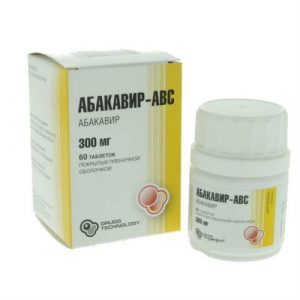Description
Inverse pharmacological antiviral drug . Penetrating into cells, it is metabolized to 5-triphosphate, which inhibits HIV reverse transcriptase, which leads to inhibition of viral replication. It is active against zidovudine resistant strains, and when used in combination with it, it slows down the development of virus resistance to zidovudine (in patients not previously treated).
is taller than zidovudine, therapeutic index in vitro (weaker than zidovudine inhibits bone marrow progenitor cells, and also has a less pronounced cytotoxic effect on peripheral blood lymphocytes, lymphocytic and monocytic macrophage cell lines). Slightly affects the metabolism of cellular deoxynucleotides and DNA content in the mitochondria of intact cells.
Lamivudine is highly active against hepatitis B virus (HBV) in all studied cell lines and in all experimentally infected animals.
Indications
Treatment of HIV infection in adults and children (as part of combination therapy with other antiretroviral drugs).
Chronic viral hepatitis B with HBV replication in patients aged 16 years and older.
Contraindications
Hypersensitivity to lamivudine.
Recommendations for the use of
The dose and treatment regimen are determined depending on the indications.
Special instructions
Use with caution in cases of impaired renal function. With CC less than 50 ml / min, dose adjustment is necessary.
Given that lamivudine is excreted almost exclusively by the kidneys, dosage adjustment in patients with impaired liver function is not required. However, caution should be used in patients with severe liver cirrhosis due to hepatitis B virus, given the risk of exacerbation of the disease after lamivudine withdrawal.
Lamivudine is not used in combination with zidovudine for neutropenia (neutrophil count less than 750 / Ојl) or anemia (hemoglobin less than 7.5 g / dl or 4.65 mmol / l).
If you experience abdominal pain, nausea, vomiting, or an increase in the level of pancreatic enzymes in the blood plasma, lamivudine should be discontinued and its use should not be resumed until the diagnosis of pancreatitis is excluded.
The use of lamivudine does not prevent the possibility of infection through sexual contact or through blood.
During treatment, the possibility of secondary infection should be borne in mind.
Pediatric use
There is no experience with lamivudine in children under 3 months of age. In children with impaired renal function, it is recommended that the dosage regimen be adjusted in the same proportions as in adults.
Composition
1 tab. contains: lamivudine 150 mg
Side effects of the digestive system: pain and discomfort in the epigastric region, nausea, vomiting, diarrhea, decreased appetite, increased activity of hepatic transaminases.
From the side of the central nervous system: fatigue, headache.
From the respiratory system: respiratory tract infection.
Other: general malaise.
active substance
Lamivudine
Terms of delivery from
pharmacies Prescription
dosage form
tablets



